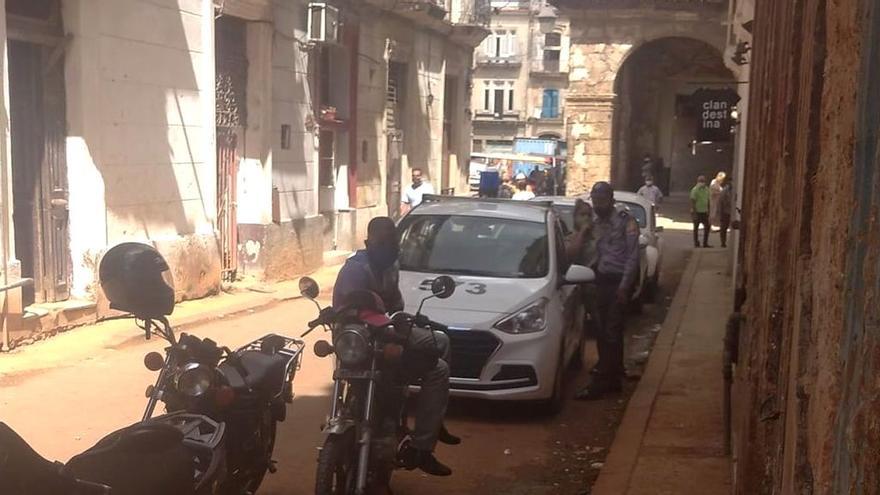
![]() 14ymedio, Reinaldo Escobar, Havana, 11 October 2020 — On October 10, a group of young Cuban activists and artists who identify as the San Isidro Movement attempted a civic action that included a concert and the presentation of posters that alluded to the need for changes in Cuba.
14ymedio, Reinaldo Escobar, Havana, 11 October 2020 — On October 10, a group of young Cuban activists and artists who identify as the San Isidro Movement attempted a civic action that included a concert and the presentation of posters that alluded to the need for changes in Cuba.
Starting the day before, the political police made full use of their considerable resources to prevent what in their opinion was a “counterrevolutionary provocation.” As a result, there were dozens of arbitrary arrests and many activists were prevented from leaving their homes.
In one of these repressive actions, a State Security official who identifies himself as Major Denis warned the independent journalist Héctor Luis Valdés Cocho that he would not allow him to leave the house and threatened him with fines and prohibitions, saying: “We will not let you cover the news of the uproar in San Isidro.”
Thanks to the obvious synonymy, this official definition excuses me from the complaints of those who find it disrespectful to call what the repressors thought was a riot the “Cry of San Isidro.”
On 25 May 1809, the Bolivians gave their Cry of Chuquisaca to proclaim independence, and since then — and perhaps before — it became a habit to name the libertarian demands in this way, by the name of the site where the historic event occurred, along with the date or the name of the leader.
Probably when Carlos Manuel de Céspedes chose the town of Yara to carry out the first fight for independence, on 10 October 1868, he did not suspect that his action would be baptized with that name, nor did he foresee that this would be his first military defeat.
On the other hand, saving the distances, the organizers of the event at the headquarters of the San Isidro Movement perhaps foresaw that the political police would prevent it from taking place by appealing, not only to their active troops, but also to government sympathizers who would carry out an act of repudiation, emulating that paramilitary formation called the Volunteer Corps which, after the uprising of 1868, was in charge of “maintaining peace, order and discipline, at whatever price necessary” in the insurgent villages.
Demands for freedom are often given more value when done “with weapons in hand.” But he who is willing to die for an ideal is also determined to kill to achieve his purposes. The nobility of this challenge endowed with words and songs is that the risks that are run far outweigh the eventual damage that could be caused.
What happened this 10th of October has changed the history of the San Isidro neighborhood and its homonymous street.
From now on, the tour guides will have to answer other questions and give new explanations on that walk called “La Ruta de San Isidro,” which begins on Avenida del Puerto, right where the remains of the old Havana Wall remain.
It will no longer be enough to indicate the old colonial and neoclassical mansions, art galleries, bars and restaurants, or to show those who dance an improvised rumba. It will not be enough to point out that Miguelito Valdés, Mister Babalú, was born here, nor that, when passing in front of number 176, the legend of Yarini, the most famous pimp in Cuba, is told.
Now, when passing in front of the Museum of Dissidence, from where the artist Luis Manuel Otero Alcántara called this peaceful protest, it will be necessary to say, still in a low voice but one day loudly: “The Cry of San Isidro happened here” and the story will have to be told.
COLLABORATE WITH OUR WORK: The 14ymedio team is committed to practicing serious journalism that reflects Cuba’s reality in all its depth. Thank you for joining us on this long journey. We invite you to continue supporting us by becoming a member of 14ymedio now. Together we can continue transforming journalism in Cuba.
